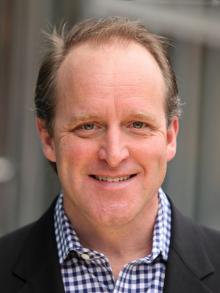RemPlex and IAEA Seminar Series: Assessing Environmental Remediation Technologies - Groundwater and Soil

A two-part seminar series using case studies to analyze remedy efficiency, effectiveness, sustainability, availability, complexity, long-term requirements, and more.
Soil Remediation Seminar, August 15, 2023
Recording
Our international panelists discussed the different aspects that need to be considered in the selection of a given remediation approach, such as efficiency, effectiveness, sustainability, maturity and availability, complexity, long-term maintenance and monitoring requirements, and more. The seminars will cover the technologies that are available to treat a broad array of contaminant categories (radionuclides, metals, and organics).
Soil remediation panelists include:

Bruce Marvin, Senior Principal Environmental Engineer, Geosyntec Consultants (California), presents "Survey of Soil Remediation Technologies."
Abstract: Soil remediation presents different challenges than groundwater, with a range of potential treatment technologies depending on the site configuration and the contaminants. Is the soil contamination near the surface or deeper in a thick vadose zone? What are the geological constraints with respect to soil particle size, permeability, and heterogeneity? These questions and the nature of the contamination (organics, inorganics, heavy metals, or radionuclides) will impact the suite of remediation technologies to consider, with the effectiveness, implementability, and relative cost being the initial criteria evaluated. This talk will touch on thermal, biological, extraction, chemical, and physical soil remediation technologies, with examples of technology applications to illustrate how the technologies can be used.

Norbert Molitor, Managing Director, Plejades GmbH (Germany), presents "Driving Considerations for Innovation in Environmental Remediation."
Abstract: The challenge of environmental remediation is to protect people and environment from eventual negative consequences arising from a contaminated site. This can be achieved by in-situ or ex-situ treatment, or confinement of the contamination. Common practice for degradable or volatile contaminants is treatment by destruction or extraction to effectively eliminate the contamination. For non-degradable or mixed contaminant types, demonstration of treatment technology effectiveness and efficiency is much more complex and difficult. Development and application of a remediation technology is dynamic and needs to consider the level of up-front development effort/investment required, risks/uncertainty associated with using an innovative technology, and minimization of waste. A clear and well-substantiated improvement in safety, effectiveness, and/or efficiency is needed to justify investment in such an approach and to accept associated risks. Similar considerations are true for assessment and remediation of radioactive contamination and legacies, requiring strict adherence to radiation protection and nuclear safety requirements. Case study examples will illustrate how specific technologies have contributed to safety, effectiveness, and efficiency in remediation of radioactive legacies, such as for Chornobyl accident fall-out contamination and decommissioning of nuclear facilities in Europe. A short outlook of what may be expected in future developments will complement these examples.
Groundwater Remediation Seminar, May 23, 2023
Recording
Presentations
Seminar Series Overview
Many technologies have been developed over the past 40+ years for remediation of environmental contamination in groundwater and soils. At any given site, selection of the most appropriate remedial alternative will be driven by a variety of environmental, technical, economic, social, regulatory, and policy-driven factors. Considerable experience exists to inform remediation technology selection based on the nature of the contamination, local hydrologic and other environmental conditions, desired remediation outcomes, budget and schedule constraints, and more.
Join us for this two-part series of seminars in which our international panelists will discuss the different aspects that need to be considered in the selection of a given remediation approach, such as efficiency, effectiveness, sustainability, maturity and availability, complexity, long-term maintenance and monitoring requirements, and more. The seminars will cover the technologies that are available to treat a broad array of contaminant categories (radionuclides, metals, and organics).
Each seminar is from 8:00 a.m. to 9:30 a.m. Pacific Time (17:00 Central Europe Time). Registration is free and open to the public. The second seminar on soil remediation technologies will be held August 15, 2023. Register in advance on ZoomGov.
These seminars are jointly hosted by the Center for the Remediation of Complex Sites (RemPlex) and the International Atomic Energy Agency’s Network of Environmental Remediation and NORM Management (ENVIRONET).
More about the Groundwater Remediation Technologies seminar held May 23, 2023
Presentations: The presentations will be posted soon.
Speakers:

An Overview of Factors to Consider in Groundwater Remedy Selection by Christian Johnson (Pacific Northwest National Laboratory)
Abstract: This talk will discuss the selection process for a groundwater remedy. What inputs are needed and what factors, both technical and non-technical, should be considered when evaluating remediation technologies? The discussion will include a survey of established groundwater remediation technologies for organic, inorganic, metal, and radionuclide contaminants. Examples from U.S. Department of Energy sites will be used to illustrate application of groundwater remediation technologies.
A Case Study on Groundwater Remediation Related to In Situ Leaching Uranium Mining at the Stráž pod Ralskem Deposit, Czech Republic by Vojtěch Vokál (DIAMO)
Abstract: A large-scale exploration of uranium ores in the second half of the 20th century led to the evaluation of 186 uranium deposits in the territory of the Czech Republic. Over a period of 50 years approximately 130,000 tonnes of uranium in concentrate were produced from 86 exploited deposits. Different mining methods were developed and used. One of the most considerable deposits in the Czech Republic is the site Hamr na Jezere-Straz pod Ralskem where both mining methods—the underground mining and the acidic in-situ leaching—were used. The extensive production of uranium led to widespread environmental impacts and contamination of groundwater. Over the ISL period (approximately 32 years), a total of more than 4 Mt of sulphuric acid and other chemicals have been injected into the ground. After 1990 a large-scale environmental program was established and the Czech government decided to liquidate the ISL Mine and start the remediation in 1996. The objectives of the remediation activities are described in following points: to restore the rock environment to a condition guaranteeing continuing usability of Turonian water of Northern Bohemia Cretaceous, to decommission boreholes and surface installations, and to incorporate the surface of leaching fields into the ecosystems taking into account regional systems of ecological stability and urban plans. With the current technological complex we should be able to fill these plans until 2042. Total costs of all remediation activities are expected to be in excess of 2 billion EUR.

Innovative Approaches to Treat Groundwater by Tamzen Macbeth (CDM Smith)